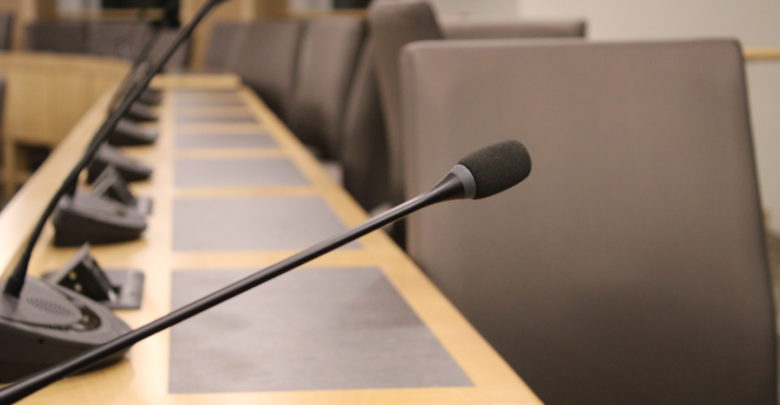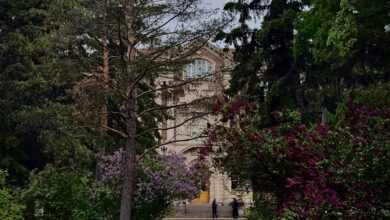Notes from the ISA: Council receives presentation on proposed tuition increases
International students would see their tuition increase by five per cent if the tuition increases are approved.
 Amanda Sparks
Amanda SparksAt the University of Alberta International Students’ Association (ISA) council meeting on November 23, 2023, Melissa Padfield, deputy-provost (students and enrolment) and Norma Rodenburg, vice-provost and registrar, presented on the proposed tuition increases.
For international students, these tuition increases are for the 2025-26 academic year. This presentation was a part of the university’s student consultations.
The university is proposing to raise international tuition by five per cent. International students in the faculty of science would see their tuition increase by 6.5 per cent. International graduate students would also see a tuition increase of five per cent.
Pedro Almeida, vice-president (academic) of the U of A Students’ Union (UASU), gave opening comments. He said that the UASU, the Graduate Students’ Association (GSA), and university administration have reviewed the tuition consultation process. Almeida said the UASU recognized the need for “communication with our international student representatives.”
Gaps in revenue and increasing cost-drivers are the reason for tuition increases, Padfield says
When developing tuition proposals, Padfield said they look at increasing cost-drivers. To do this, the university first look at the Consumer Price Index (CPI). They also look at “other inflationary pressures in specific areas that might be impacting us,” Padfield said.
Additionally, they look at where there are gaps in revenue. Padfield gave the example of the Operating and Program Support grant from the Government of Alberta. In the last three years, the Government of Alberta has reduced this grant by $222 million. According to Padfield, the university does not anticipate an increase to that grant in 2024.
In 2018-19, 56.5 per cent of the U of A’s funding came from the government, Padfield said. Comparatively, in 2024-25, the university anticipates 42 per cent of their funding to come from the government. As well, in 2018-19, tuition contributed to 29 per cent of funding. For 2024-25, they expect that number to increase to 45.7 per cent.
“So this is a change in philosophy that has a direct impact on the way the university has to manage its funding in order to be able to deliver programming,” Padfield said.
Regarding international students, tuition fee regulations mandate that the international student tuition cover the cost of instruction.
University increasing international tuition offset for scholarships and bursaries
Additionally, Padfield said they are proposing raising the international tuition offset amount from 7.55 per cent to 8.55 per cent. The international tuition offset goes toward scholarships and bursaries for international students.
“We want to ensure we have really competitive scholarships, and really responsive need-based supports, knowing that many students are impacted by currency volatility [and] geopolitical events that make it difficult to afford their tuition once they’ve arrived in Canada,” Padfield said.
For the current international student population, Padfield said this will increase support by $1.6 million.
Padfield says cohort 99 students will proceed to the program-based tuition model
In fall 2020, the university switched international tuition models. Students that began before the model, known as cohort 99, remain on the course-based tuition model. Students that began after the model are on the program-based tuition model.
Those in cohort 99 could only continue on a course-based tuition model until 2024. According to Padfield, 485 graduate students and 500 undergraduate students remain on course-based tuition.
“We’ve taken a look, because each of these are very individualized situations,” Padfield said.
Some students will have a one-year extension in the program, while others will proceed into the program-based tuition model. Padfield said they are communicating with students.
“We are implementing a budget model that’s looking at cost containment,” Padfield says
Multiple councillors mentioned the importance of incoming students understanding Edmonton’s cost of living.
Padfield acknowledged the “dramatic change in costs.” As well, she said the recommendation to portray the accurate cost of living is “absolutely something we’re interested in doing.”
According to Padfield, one of the goals of the Student Experience Action Plan (SEAP), which the university is launching January 31, is transparency surrounding costs.
Tahmid Al Hafiz, the ISA council’s speaker, asked two questions. Firstly, Al Hafiz asked if the university had plans to manage their costs more effectively without burdening students. Secondly, he asked what the university’s long-term financial plan is to ensure financial stability without relying on tuition.
In terms of benefits and salaries for academic and non-academic staff, Padfield said the university bargains with two representative organizations: the Association of Academic Staff U of A (AASUA) and the Non-Academic Staff Association (NASA). Salary and benefits are agreed upon by these two associations in a collective agreement, Padfield said.
“We make very explicit what our financial picture looks like when we have those conversations. And so we just have to see what those processes yield at the end of the day.”
Regarding the universities plans for a sustainable financial future, Padfield said “we are implementing any budget model that’s looking at cost containment.”



